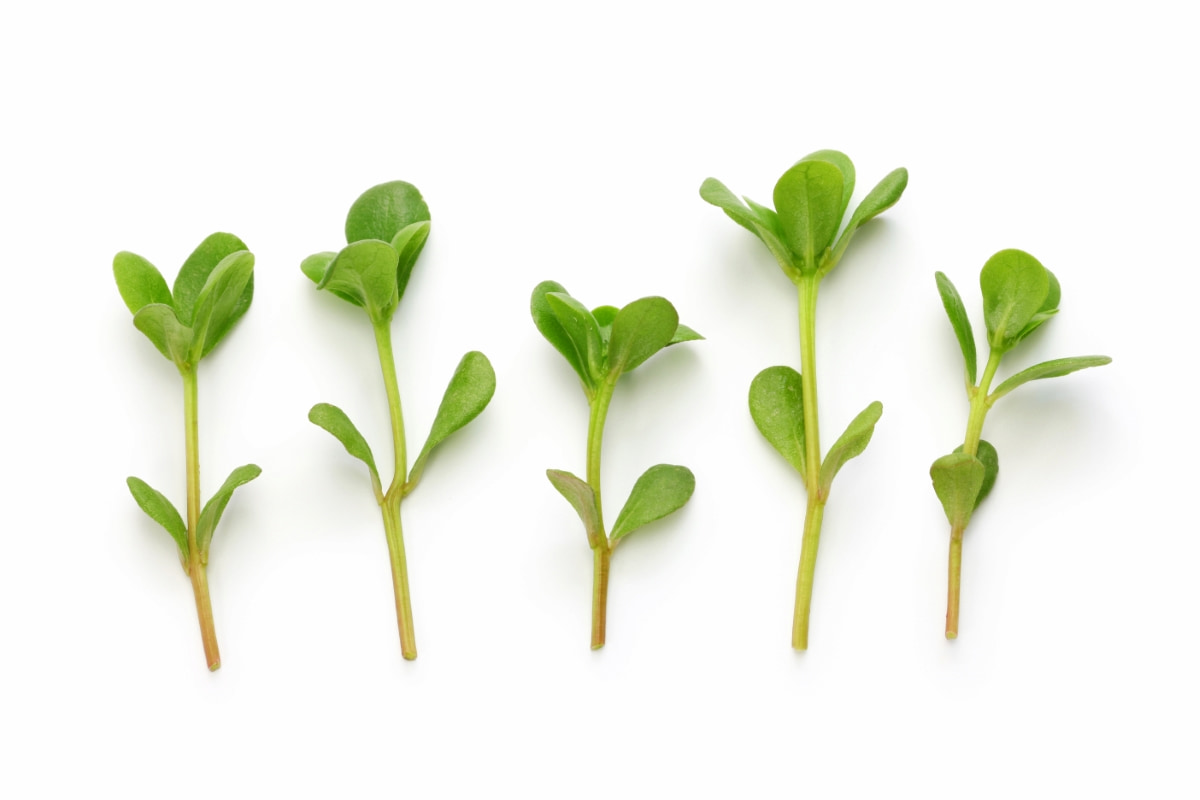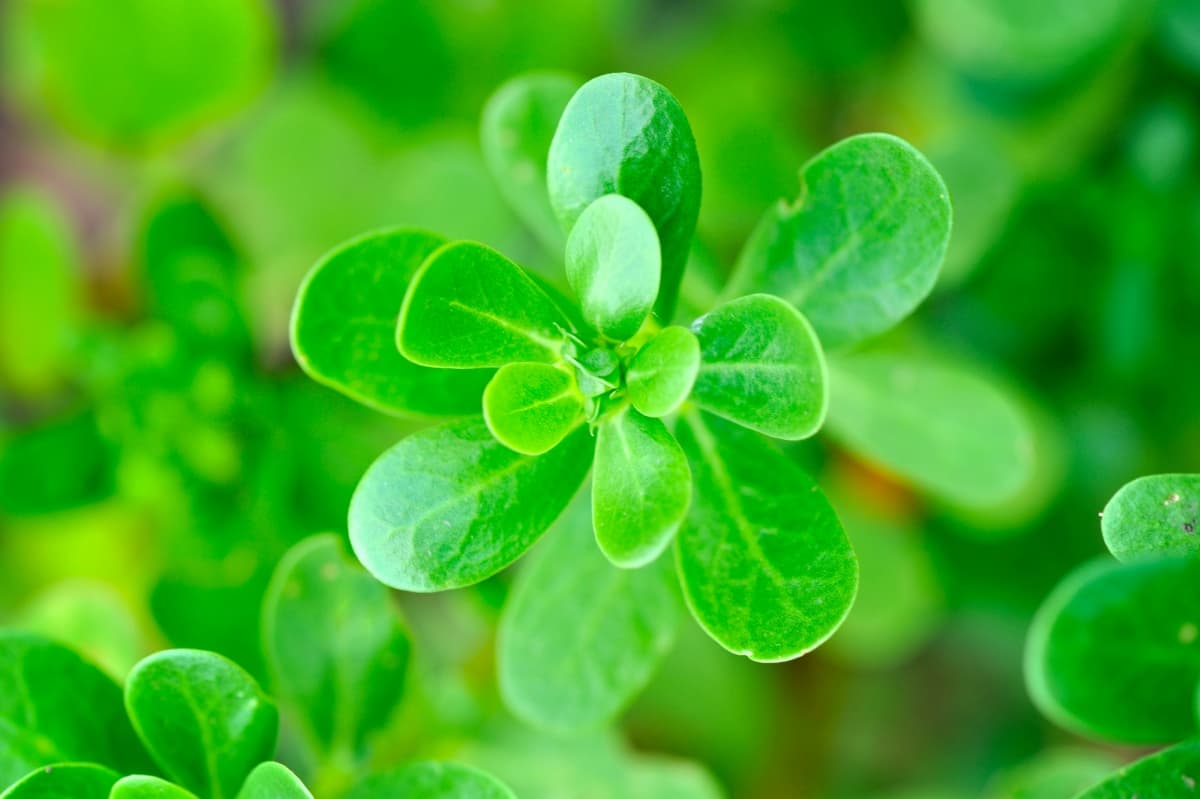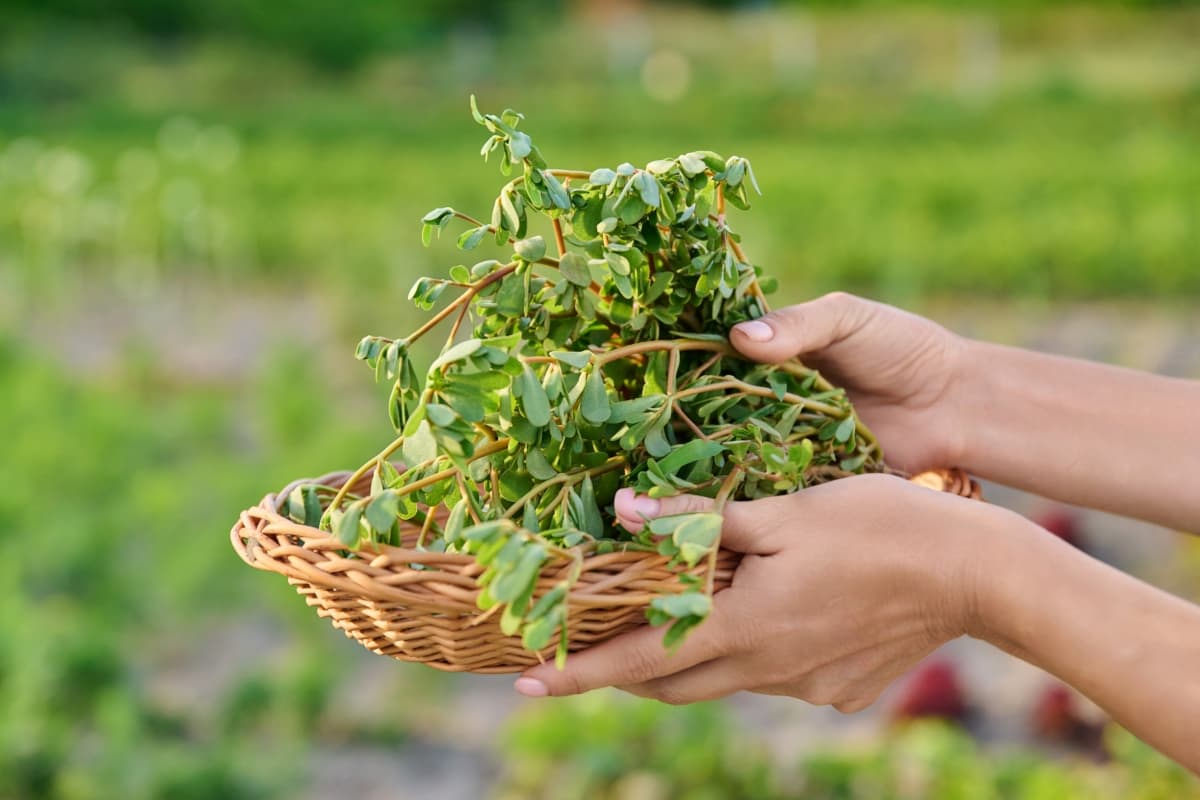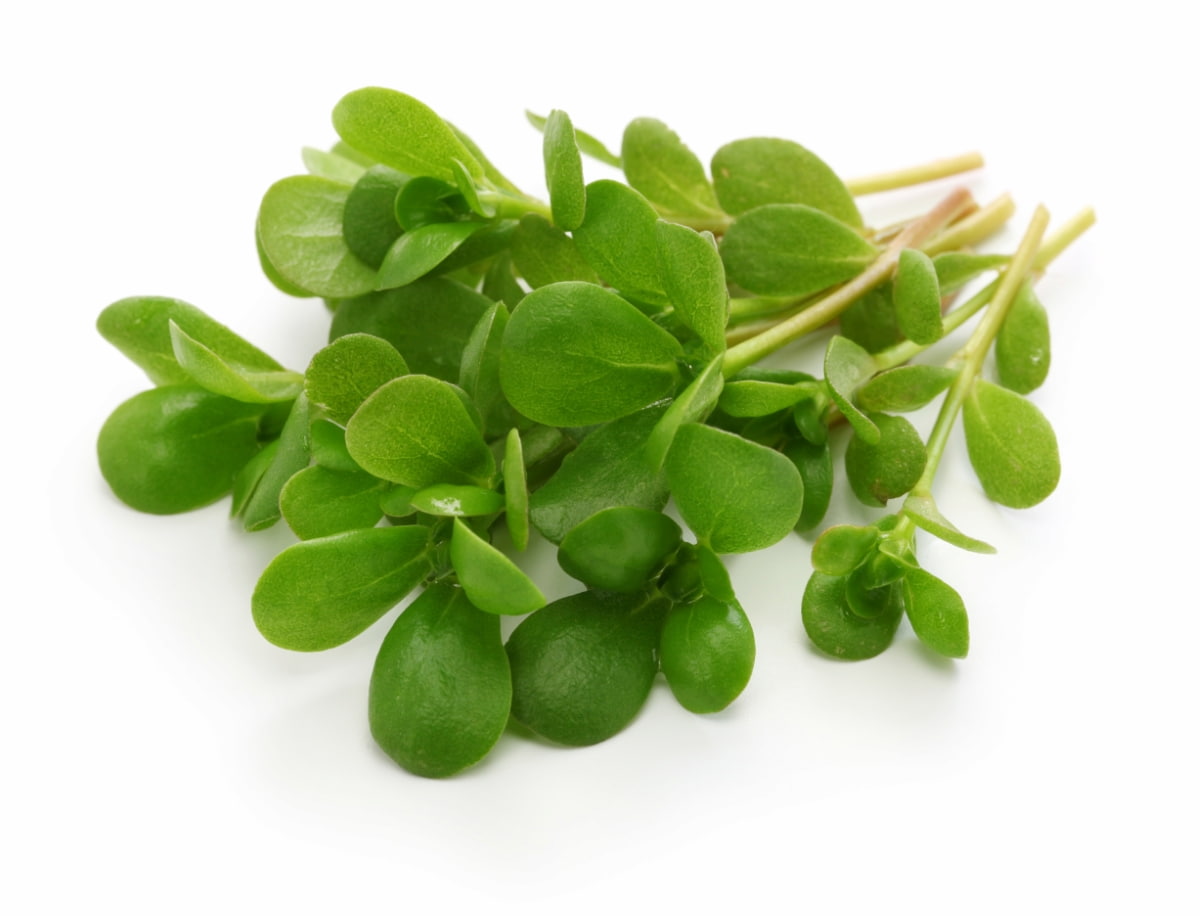Purslane is botanically known as Portulaca oleracea and is also called Portulaca. Is Purslane an indoor plant? From succulent and flavorful leaves to its ability to thrive in various environments, Purslane is a fantastic addition to any garden or indoor space. Their succulent leaves and vibrant flowers bring beauty and freshness to your outdoor space.

Soil Preparation and Fertilization Techniques for Purslane Plant Care
Before planting, it is important to ensure the soil is well-drained. In terms of fertilizer, Purslane plants thrive in nutrient-rich soil. You can choose either organic or synthetic fertilizers based on your preferences. Organic options for Purslane plants include fish emulsion, bone meal, or compost tea, while synthetic fertilizers typically come as granules or liquid concentrates.
When applying fertilizer to your Purslane plants, following the dosage instructions provided on the package is important. Over-fertilizing can lead to excessive vegetative growth but reduced flowering and seed production. Therefore, a balanced NPK (nitrogen-phosphorus-potassium) ratio such as 10-10-10 or 14-14-14 should suffice. Remember that maintaining a healthy balance of nutrients will contribute to vibrant foliage and abundant blooms throughout the growing season.
Sunlight Requirements and Exposure for Optimal Growth of Purslane
Sunlight is an important factor in the growth of Purslane plants. These sun-loving plants thrive best when exposed to full sunlight for at least 6 hours daily. Where is the best place to plant Purslane? Adequate sunlight ensures the leaves remain vibrant, the stems sturdy, and the flowers abundant.
If you’re growing Purslane indoors, place it near a sunny window. Supplemental lighting can also be beneficial if natural light is insufficient. Regularly monitor how much direct sunlight your Purslane receives each day. Adjust their placement accordingly if they get too little or too much sun exposure.
Choosing the Right Location for Growing Purslane Plants
Purslane thrives in full sun, so selecting a spot that receives 6 hours of direct sunlight daily is important. This will provide the necessary light energy for photosynthesis and promote optimal plant growth. In addition to sunlight, Purslane also prefers well-drained soil.
If you plan on growing Purslane in containers, ensure they have drainage holes and are large enough to accommodate the plant’s spreading habit. Also, consider placing saucers under the pots to catch any excess water that drains out. Choosing the right location for your Purslane plants will set them up for success and ensure their health and vigor throughout the growing season.
Propagation Methods: Growing Purslane from Seeds or Cuttings
Growing Purslane from seeds is a straightforward process that requires minimal effort. Start by collecting mature seed pods from existing plants in late summer or early fall. Once the pods have dried, gently crack them open and collect the small black seeds inside. Sow these seeds directly into well-draining soil, lightly covering them with a thin compost layer. Alternatively, if you want faster results, consider propagating Purslane through cuttings.
In case you missed it: Inch Plant Care: Pruning, Propagation, and Fertilizer

Select healthy stems from established plants and make clean cuts just below a leaf node using sharp scissors or pruners. Remove lower plant leaves and place the cuttings in water until roots form. Once rooted, transfer the cuttings into pots filled with potting soil mix and keep them moist until they become new plants. Both methods offer successful ways to propagate Purslane and allow you to enjoy this abundant, versatile plant throughout your garden.
Container Gardening Tips for Cultivating Purslane Plants Indoors
Container gardening is a fantastic option for growing Purslane plants indoors. Select a pot or container that has good drainage holes at the bottom. This will prevent water from pooling around the roots and causing rot. Additionally, select a pot that is deep enough to accommodate the root system of your Purslane plants. Next, use a well-draining potting mix specifically formulated for succulents or cacti. These mixes provide excellent drainage while retaining enough moisture for optimal growth.
When watering your indoor Purslane plants, make sure not to overdo it. Water them thoroughly, but only when the top inch of the soil feels dry. Position your containers in an area where they receive bright sunlight for at least six hours each day. Purslane thrives in full sun conditions, so ensure they get adequate light exposure. Fertilize indoor Purslane plants with a balanced fertilizer for 4 to 6 weeks during their active growing season (spring through summer). This will provide them with essential nutrients for robust growth.
Purslane Plant Care: Understanding the Basics
Firstly, choosing the right location is crucial for the success of your Purslane plants. Purslane plants prefer full sun but can tolerate some shade. Ensure you find a spot that receives at least six hours of direct sunlight daily. Purslane thrives in well-draining soil. When it comes to fertilization, Purslane doesn’t require much. A balanced fertilizer applied once every 2 weeks during the growing season should be sufficient. Pruning plays an important role in maintaining vigorous Purslane plants. Regularly remove dead or damaged leaves and flowers to encourage new growth.
Watering and Irrigation Guidelines for Healthy Purslane Plants
Proper watering is important for the health and vitality of your Purslane plants. These succulent herbs thrive in well-drained soil, so it’s important to balance keeping them hydrated and avoiding waterlogging. During hot summer, when perspiration levels are high, you may need to increase the watering frequency.
In case you missed it: Staghorn Fern Care: Watering, Fertilizing Mounting, and Pruning

Keep an eye on the weather conditions and adjust accordingly. Consider drip irrigation rather than overhead sprinklers to avoid wetting the foliage excessively during irrigation. This will minimize the risk of fungal diseases caused by prolonged leaf wetness. Remember not to overwater and provide sufficient drainage for optimal growth.
Pest and Disease Management Strategies for Purslane Plant Care
Firstly, regularly inspecting your plants for any signs of pest infestation is important. Common pests that may attack Purslane include aphids, spider mites, and slugs. If you notice any pests on your Purslane plants, you can use several organic methods to control Purslane plant pests. For example, spraying water and soap can help deter aphids, while introducing beneficial insects like ladybugs can help control spider mite populations.
In addition to pests, Purslane is susceptible to fungal diseases. To prevent these diseases from taking hold in your garden, ensure adequate spacing between plants for good air circulation. Avoid overhead watering the plant, which can promote fungal growth, by opting for drip irrigation at the base of the plant instead. Another preventive measure is practicing proper sanitation in your garden. Remove any fallen leaves or debris where pests or disease-causing organisms may thrive.
Overwintering and Winter Protection Measures for Purslane Plants
Bring them indoors: If you’re growing Purslane in containers or pots, consider moving them indoors before the first frost hits. Find a sunny spot near a window where they can still receive adequate sunlight during winter.
Mulch around the base: For those growing Purslane in garden beds, adding mulch around the plant base can help protect their roots from freezing temperatures. Organic materials like straw or shredded leaves make great insulators.
Provide shelter: In areas with harsh winters, it may be necessary to provide additional shelter for your Purslane plants. Use frost blankets or row covers to create a protective barrier against extreme cold temperatures and wind.
Avoid overwatering: Can you overwater Purslane? During winter, reduce the watering frequency as Purslane plants enter dormancy. Overwatering the Purslane can lead to root rot and other fungal diseases that thrive in moist conditions.
Monitor temperature fluctuations: Keep an eye on weather forecasts and be prepared to take action if there are sudden drops in temperature or unexpected frosts. Covering your plants overnight with old blankets or sheets can offer temporary protection until morning arrives.
Pruning and Harvesting Techniques for Maintaining Vigorous Purslane Plants
It’s important to pinch back the stems of your Purslane plants regularly. This will not only encourage branching but also prevent them from becoming leggy. To do this, use clean garden shears or even just your fingers to snip off the tops of the stems. Aim to remove about one-third of the plant’s overall height.
In case you missed it: African Mask Plant Care: Pruning, Propagation, and Fertilizer

When to harvest Purslane? Regarding harvesting, Purslane is at its best when the leaves are young and tender. You can start picking individual leaves when they reach a decent size, usually around 2-3 inches long. Tug on each leaf near its base until it separates from the stem. Remember that regular harvesting stimulates more growth in Purslane plants, so don’t be afraid to keep picking throughout the growing season.
Conclusion
Purslane is a fascinating herbaceous plant that has captured the attention of gardeners and health enthusiasts. This annual succulent possesses thick, fleshy leaves and produces small yellow flowers that add color to any garden. Furthermore, Purslane has excellent adaptability when it comes to growing conditions.
- Feed Your Flock for Less: Top 10 Tips to Save on Chicken Feed
- Ultimate Guide to Ossabaw Island Hog: Breeding, Raising, Diet, and Care
- Hatching Answers: The Top 10 Reasons Your Chickens Aren’t Laying Eggs
- Eggs and Economics: Breaking Down the Cost of Raising Backyard Chickens
- Defend Your Greens: Proven Methods to Keep Iguanas Out of Your Garden
- Ultimate Guide to Cinnamon Queen Chicken: A Comprehensive Guide for Beginners
- Ultimate Guide to California Tan Chicken: Breeding, Raising, Diet, Egg-Production and Care
- Ultimate Guide to Marsh Daisy Chicken: Breeding, Raising, Diet, and Care
- 10 Types of Chicken Farming Businesses You Can Start for Profits